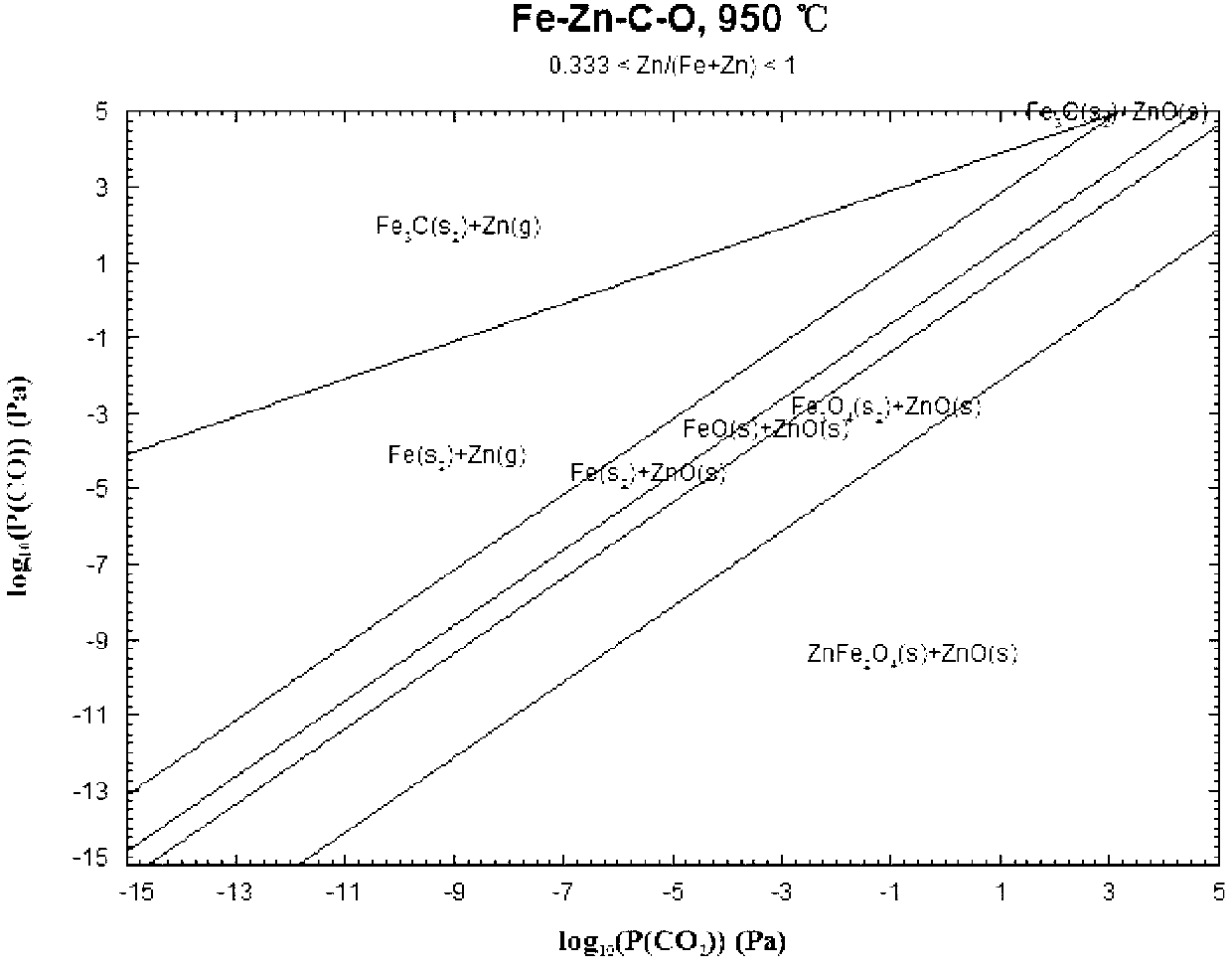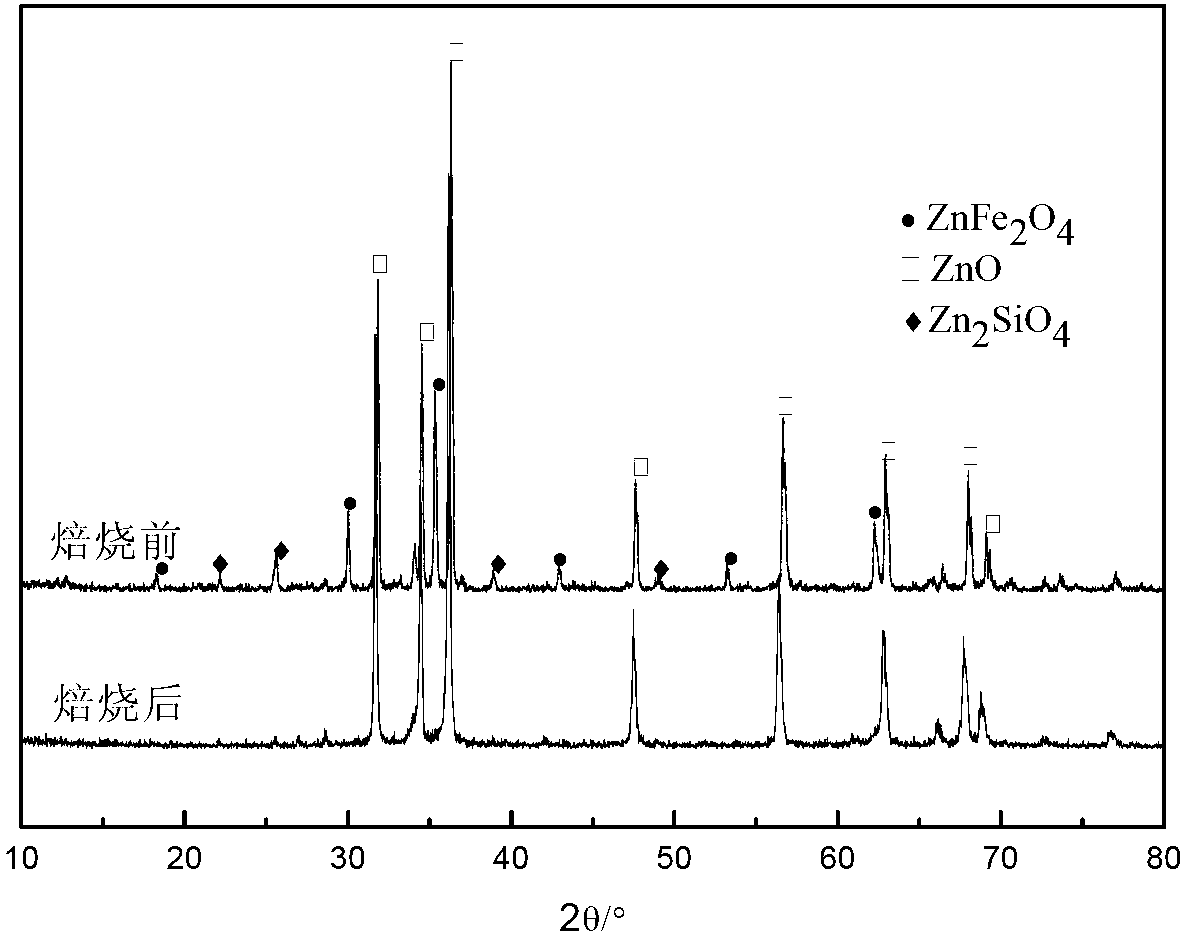Method for performing flash reducing and roasting on zinc calcine
A flash roasting and zinc calcination technology, which is applied in the field of zinc smelting, can solve the problems of low efficiency and long roasting time of rotary kilns and box-type resistance furnaces, and achieve the effects of short roasting time, rapid response and cost reduction
- Summary
- Abstract
- Description
- Claims
- Application Information
AI Technical Summary
Problems solved by technology
Method used
Image
Examples
Embodiment 1
[0029] Dry the zinc calcine with a particle size of -74μm to a moisture content of ≤1wt%, and then spray it into the flash roaster through the feeding system, and inject CO+N with a CO concentration of 0%vol at the top 2 The mixed gas is used as the material conveying gas, and the material falls in a suspended state in the furnace, and at the same time undergoes a reduction reaction with the CO gas introduced into the furnace; the furnace temperature is controlled at 1050°C, the furnace CO concentration is 200ppm, and the furnace CO 2 Concentration 35%vol, O in the furnace 2 The concentration is 0; the soluble zinc rate of the roasted product is 99.06% after analysis, the soluble zinc rate of the material after roasting increases by 12%, and the Fe content of the roasted product 2+ / T Fe The value of is 0.316, and the decomposition rate of zinc ferrite reaches 83.5%.
Embodiment 2
[0031] Grind and sieve the zinc calcine until the particle size is -125μm, dry it until the moisture content is ≤1wt%, and then put it into the flash roaster through the feeding system, and feed CO+N with a CO concentration of 18%vol at the top 2 The mixed gas is used as the material conveying gas, and the material falls in a suspended state in the furnace. At the same time, it undergoes a reduction reaction with the CO gas introduced into the furnace. The furnace temperature is controlled at 950°C, the CO concentration in the furnace is 2%vol, CO 2 The concentration is 50% vol, the decomposition rate of zinc ferrite in zinc calcined sand reaches 81.3%, and the soluble zinc rate of roasted products is 98.2%, of which Fe 2+ / T Fe The value of is 0.323; figure 1 In order to compare the XRD patterns before and after roasting, there is no characteristic peak of zinc ferrite, indicating that the decomposition of zinc ferrite in zinc calcine is relatively complete.
Embodiment 3
[0033] Grind and sieve the zinc calcine until the particle size is -74μm, dry it until the moisture content is ≤1wt%, then add it into the flash roaster through the feeding system, and feed CO+N with a CO concentration of 13%vol at the top 2 The mixed gas is used as the material conveying gas, and the material falls in a suspended state in the furnace, and at the same time undergoes a reduction reaction with the CO gas introduced into the furnace. The furnace temperature is controlled at 800°C, the furnace CO concentration is 1000ppm, and the furnace CO 2 With a concentration of 10%vol, the decomposition rate of zinc ferrite in zinc calcine reaches 76.5%, and the soluble zinc rate of roasted products is 97.1%, of which Fe 2+ / T Fe The value of is 0.319.
PUM
| Property | Measurement | Unit |
|---|---|---|
| particle size | aaaaa | aaaaa |
Abstract
Description
Claims
Application Information
 Login to View More
Login to View More - R&D
- Intellectual Property
- Life Sciences
- Materials
- Tech Scout
- Unparalleled Data Quality
- Higher Quality Content
- 60% Fewer Hallucinations
Browse by: Latest US Patents, China's latest patents, Technical Efficacy Thesaurus, Application Domain, Technology Topic, Popular Technical Reports.
© 2025 PatSnap. All rights reserved.Legal|Privacy policy|Modern Slavery Act Transparency Statement|Sitemap|About US| Contact US: help@patsnap.com


